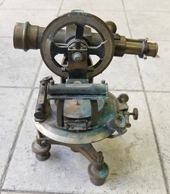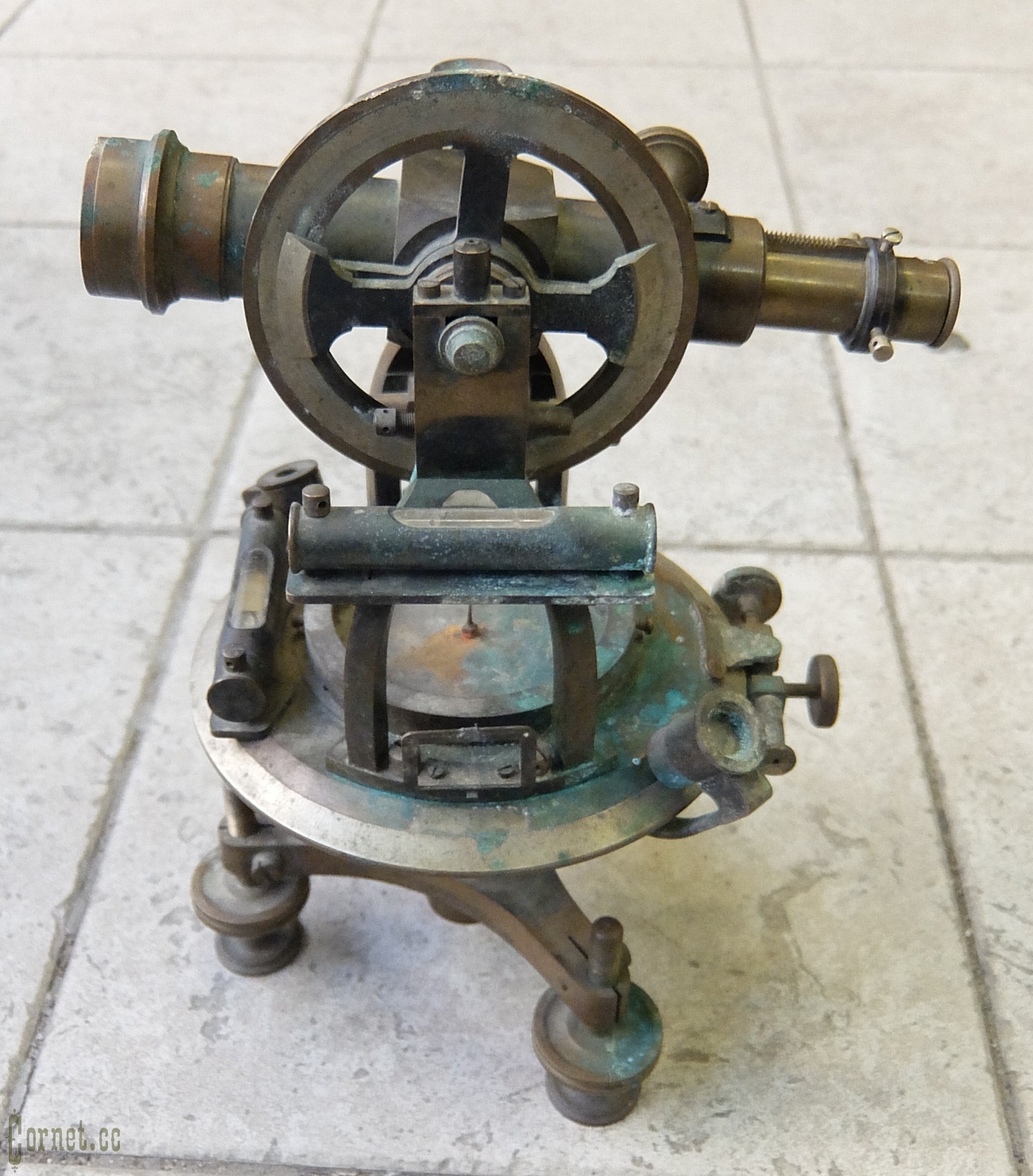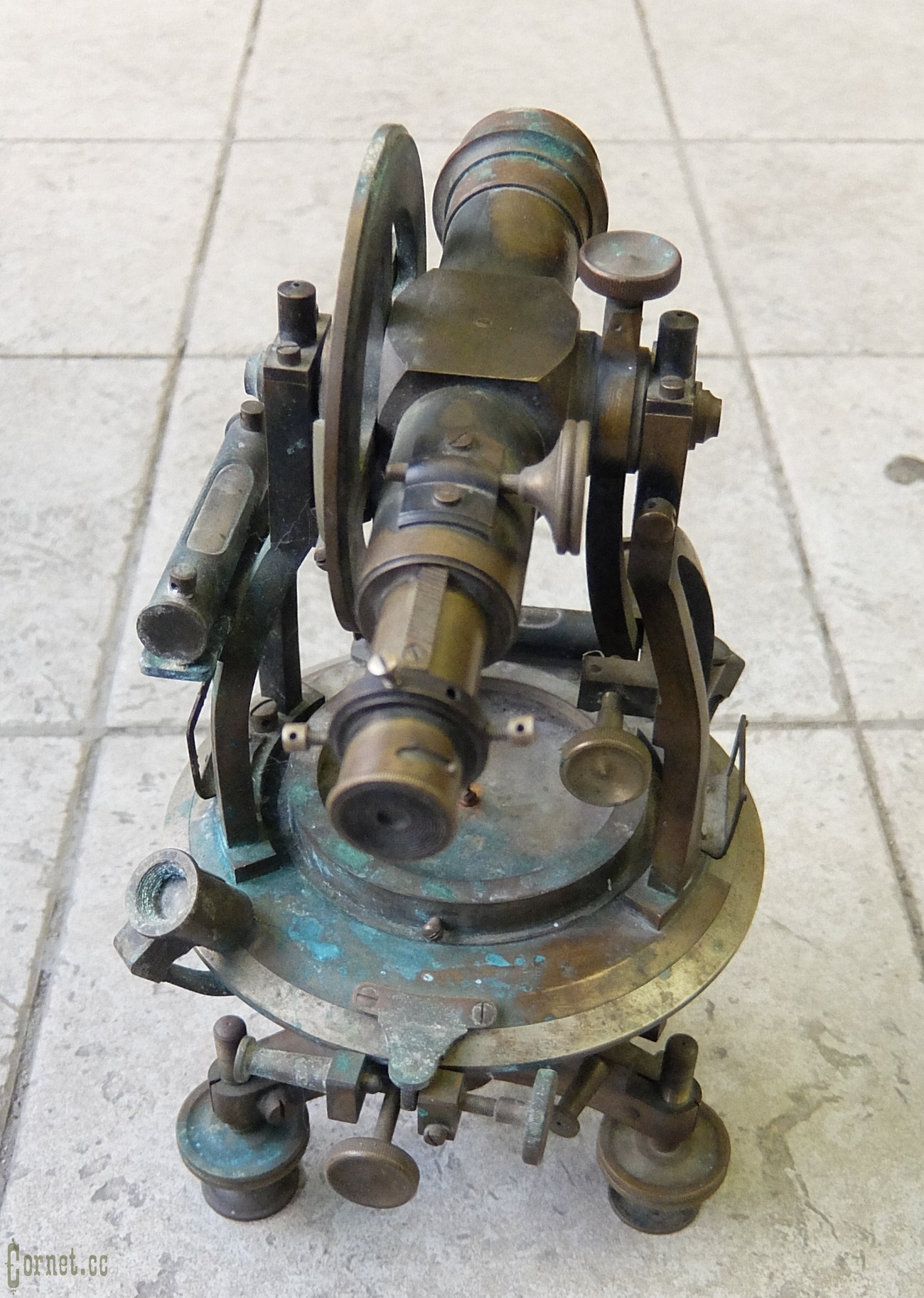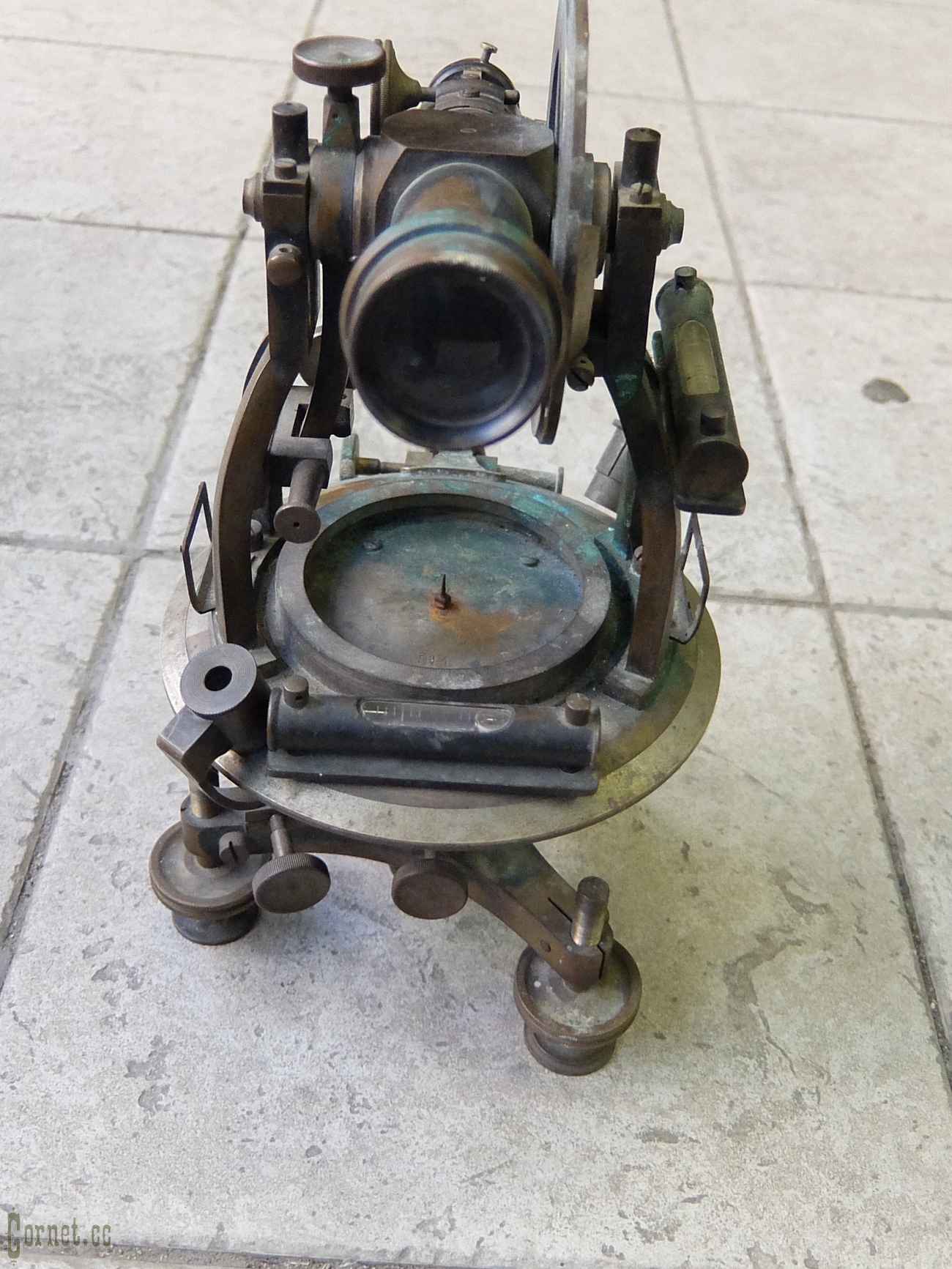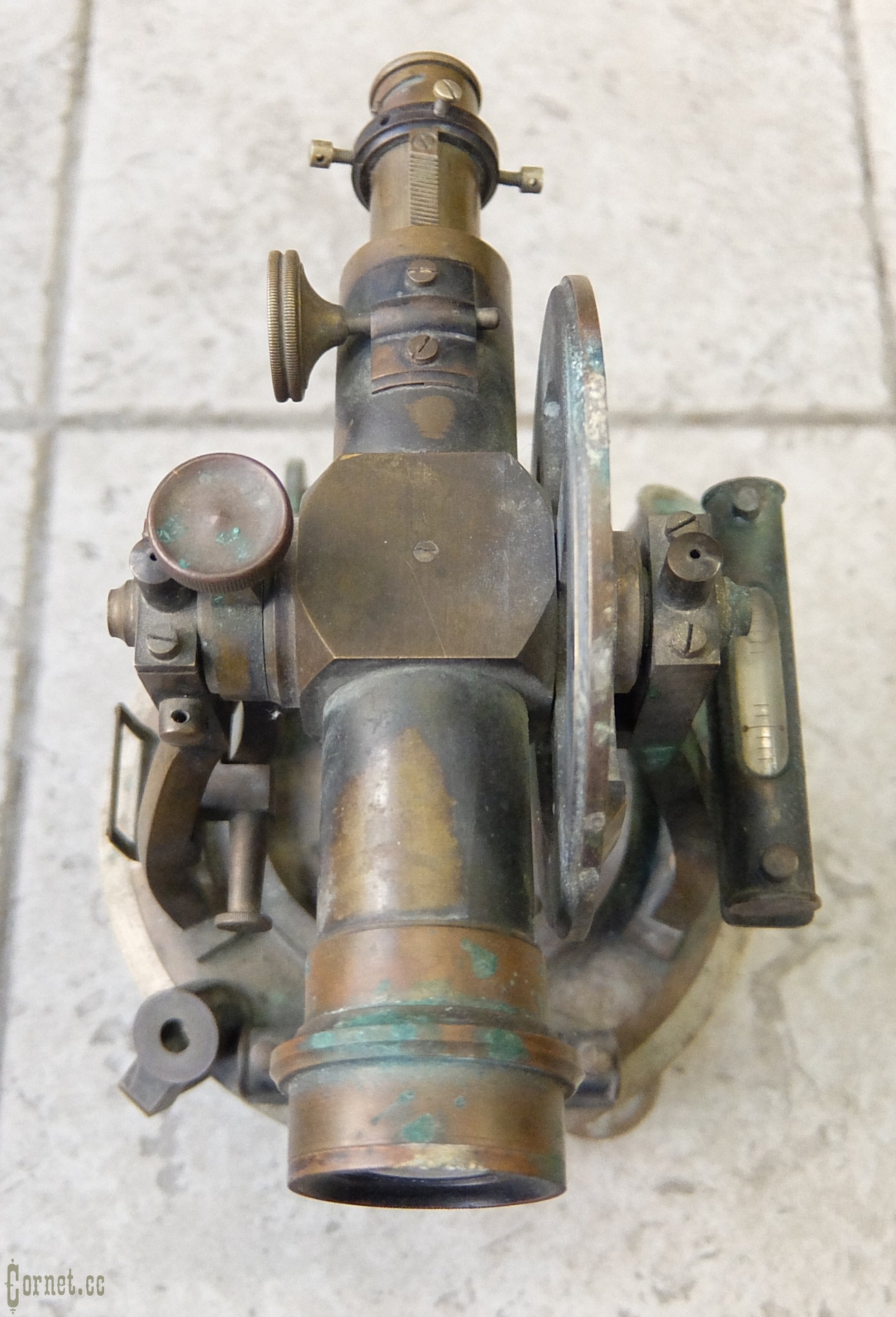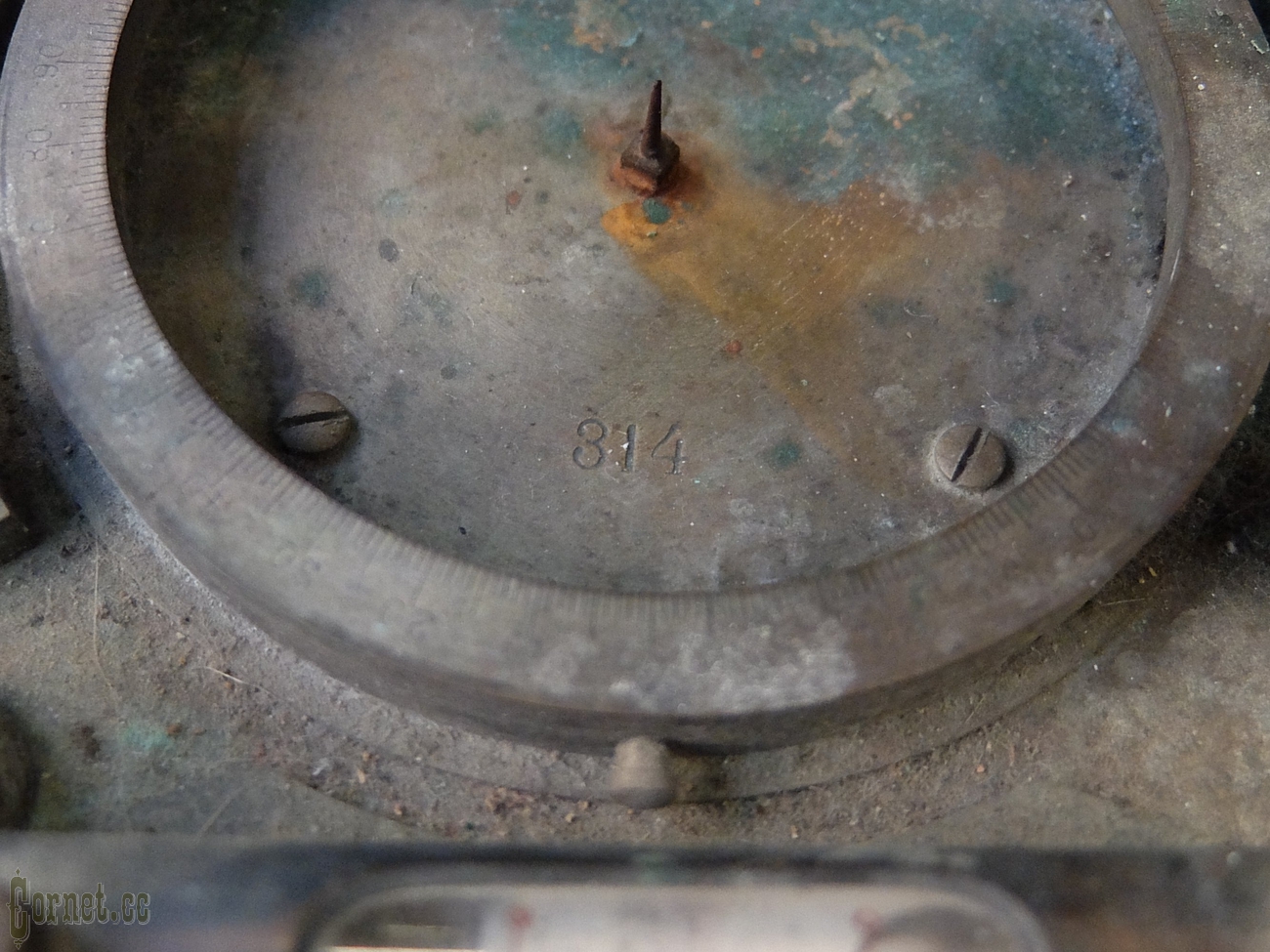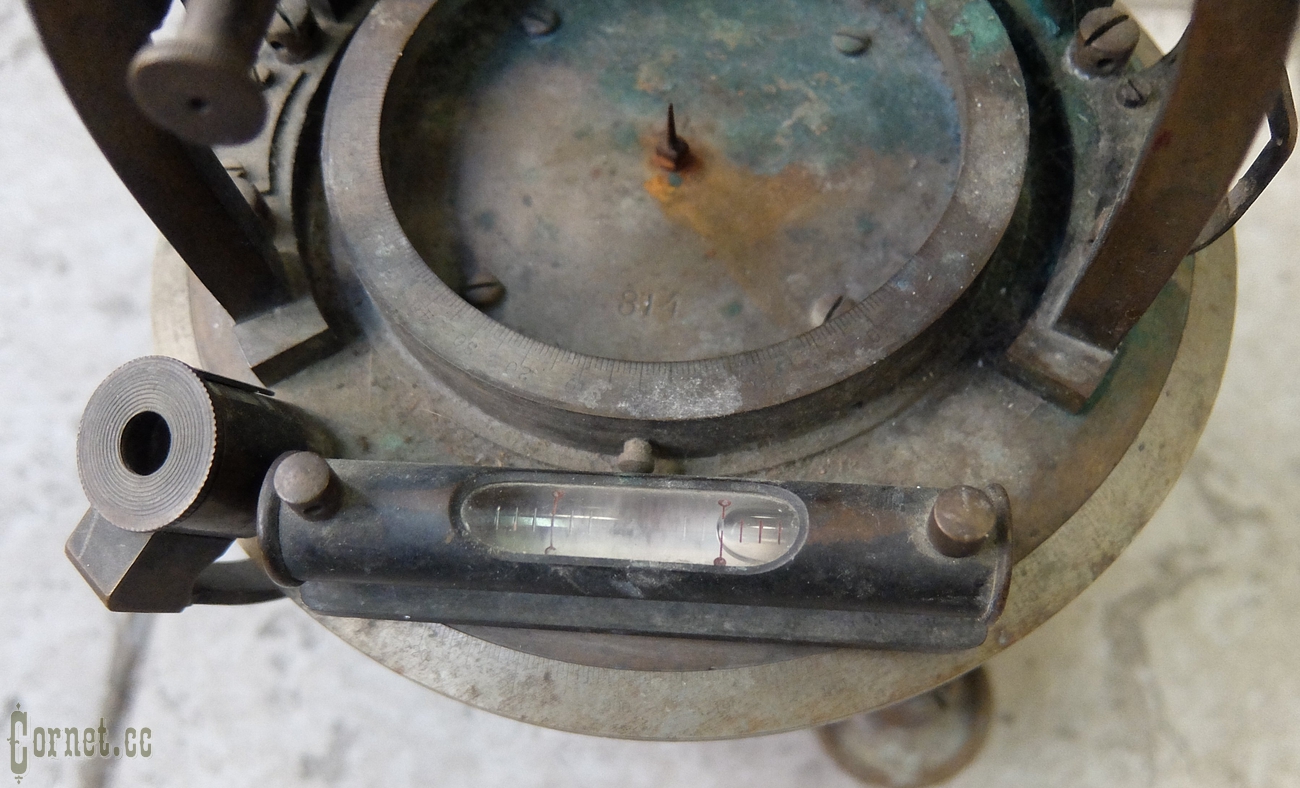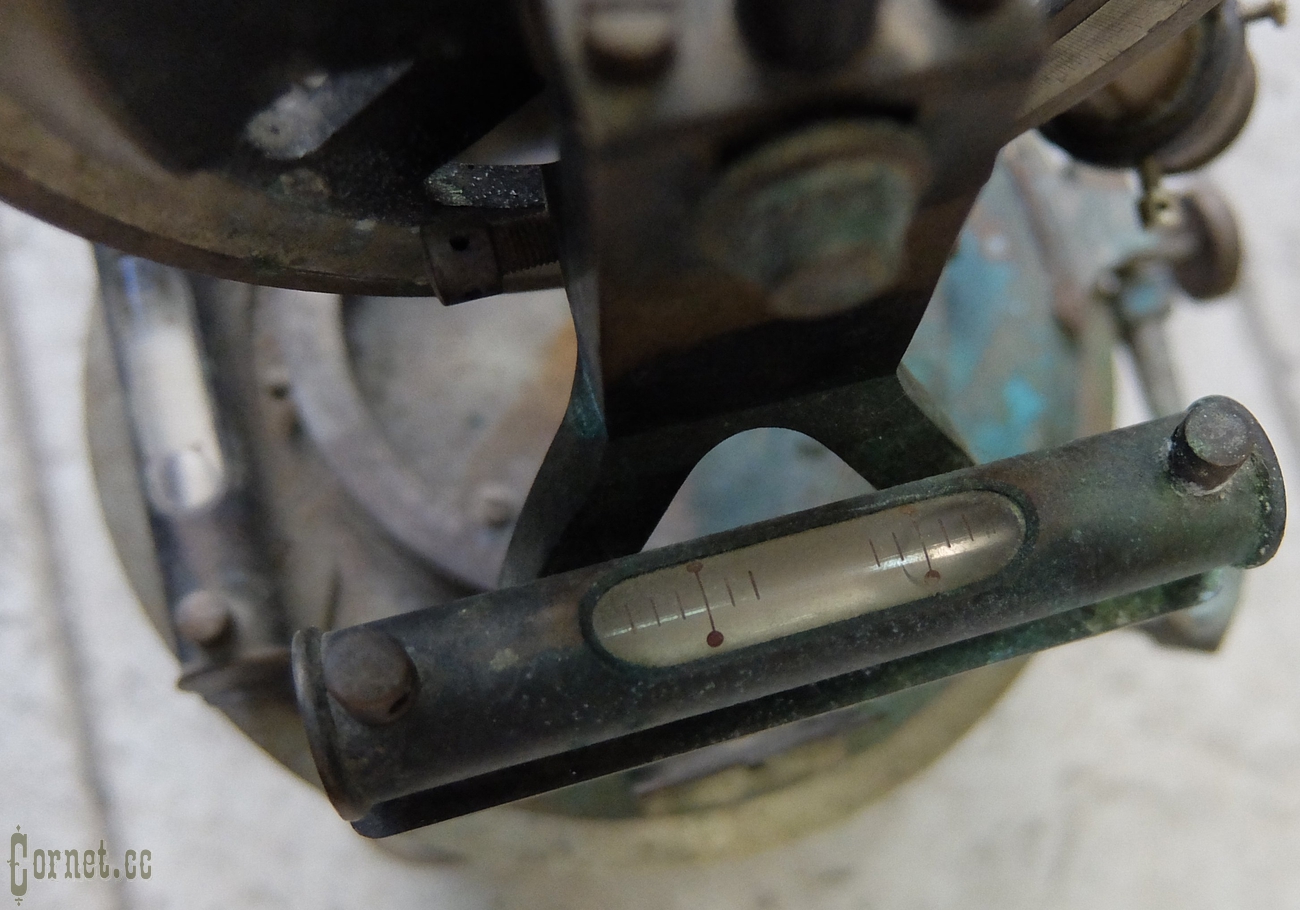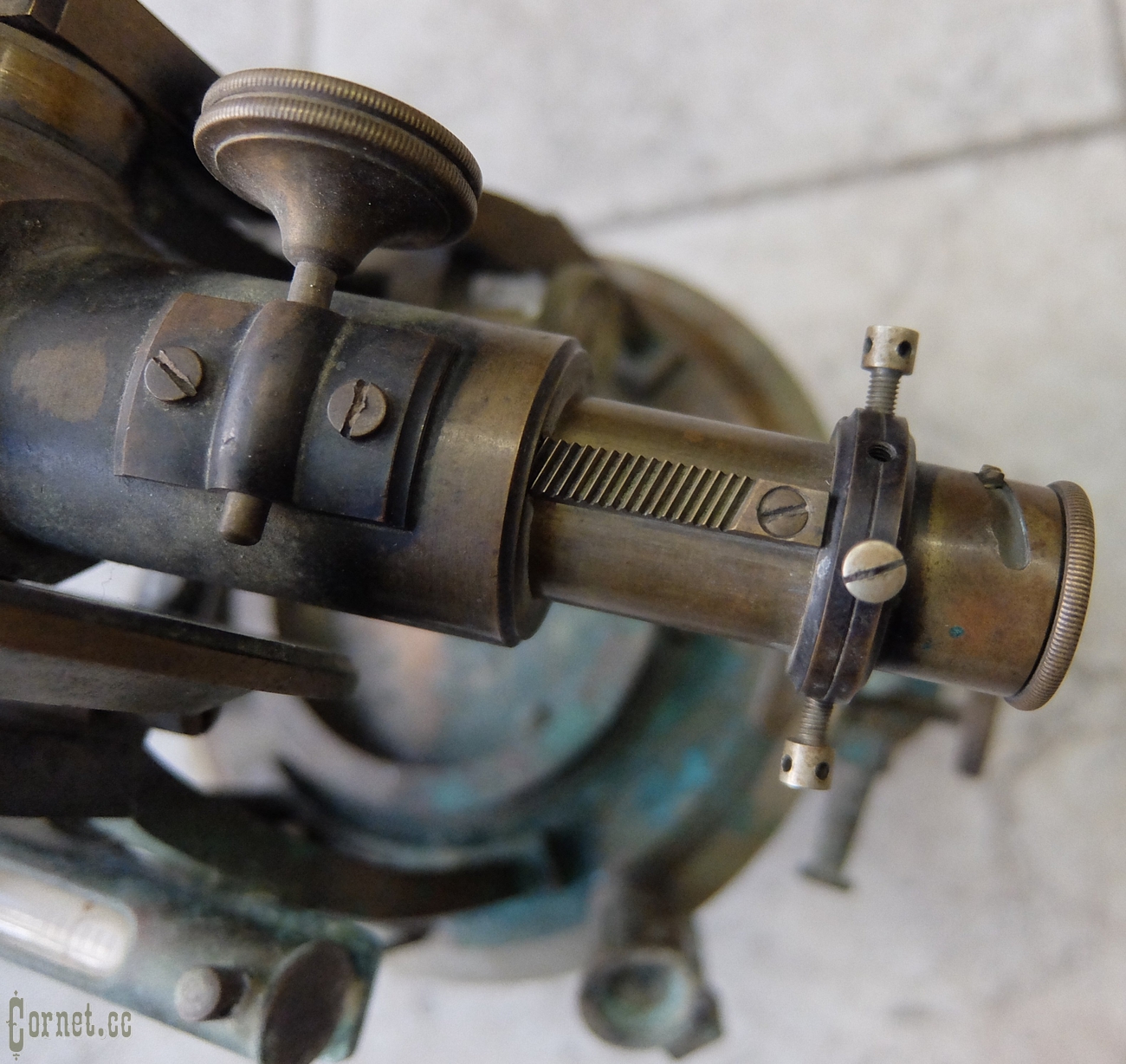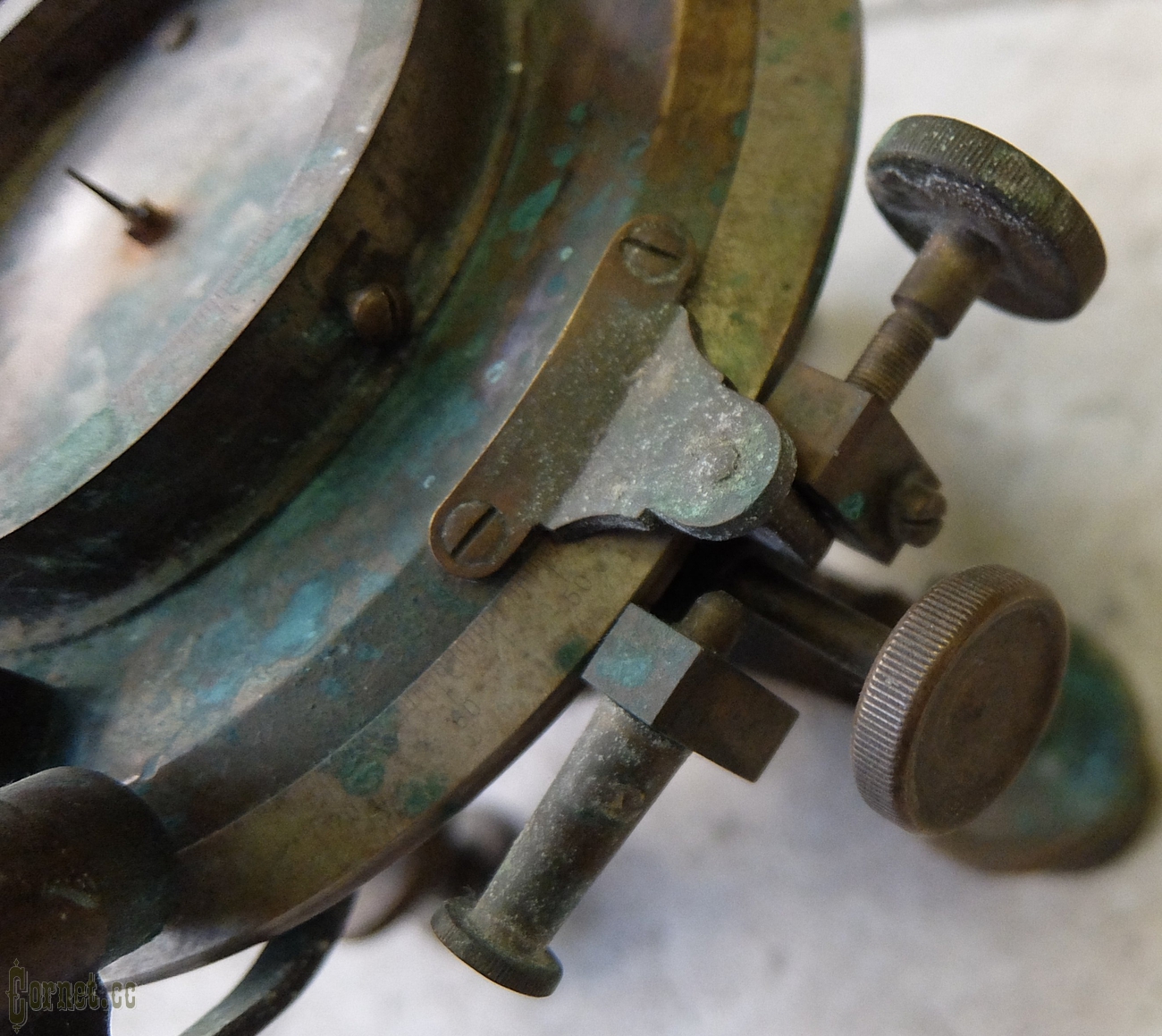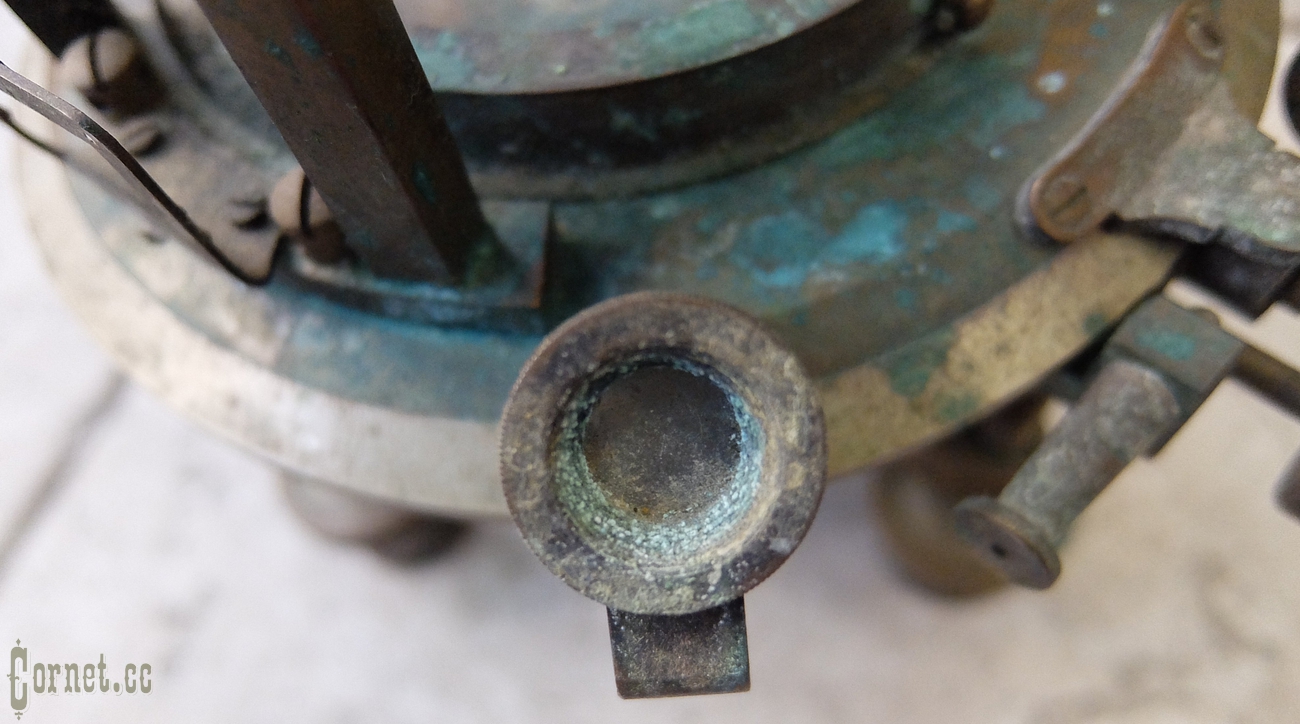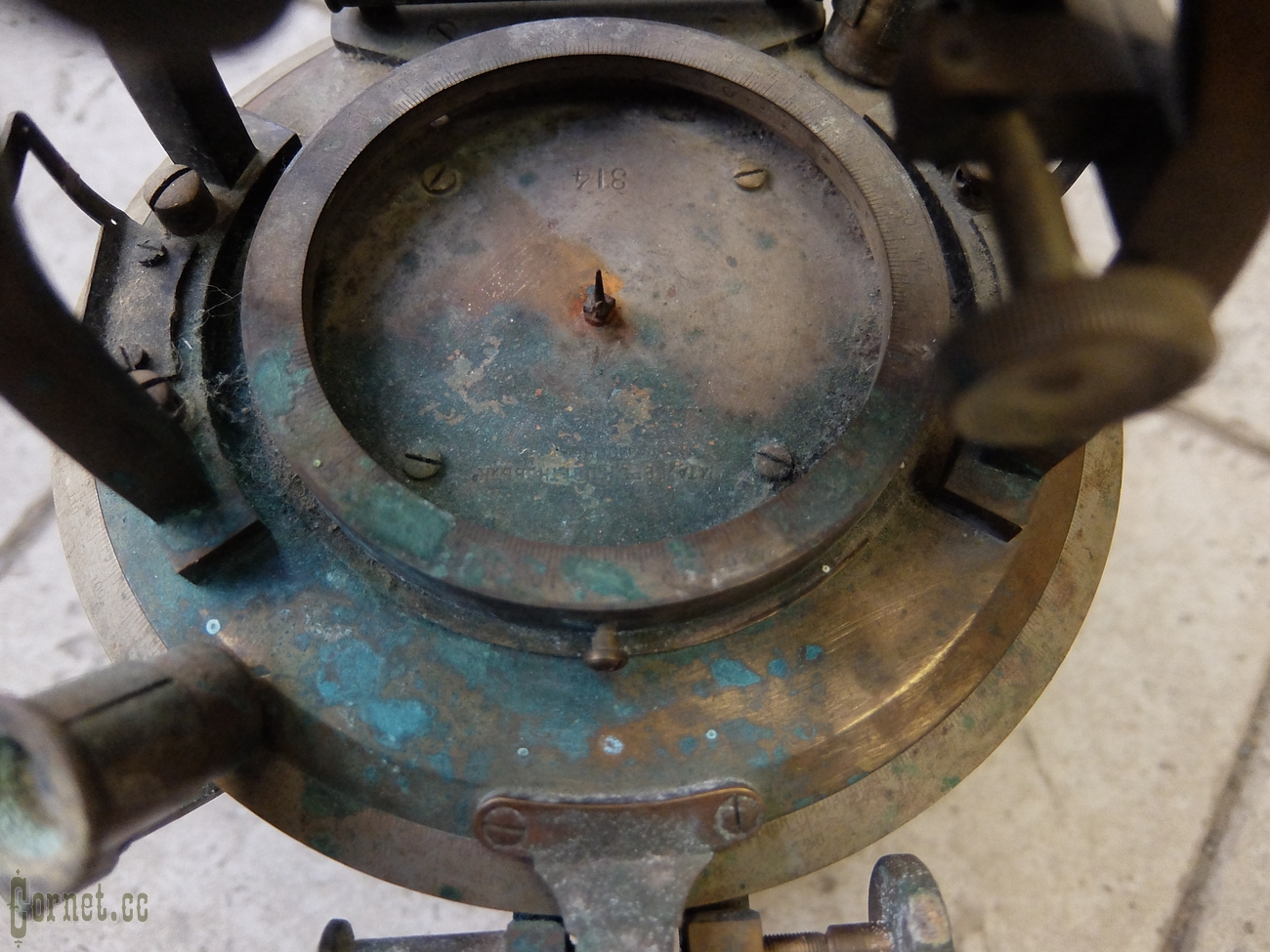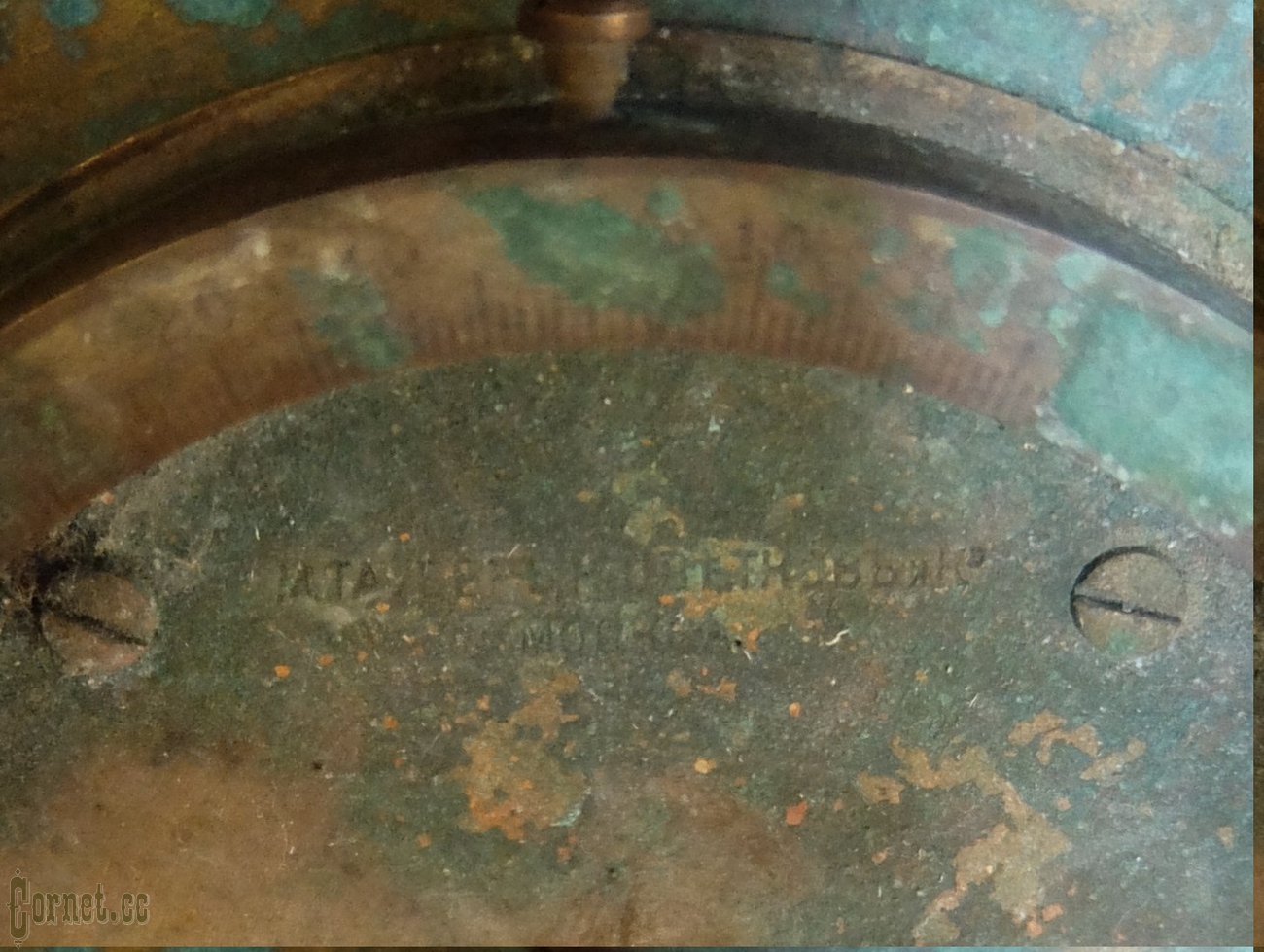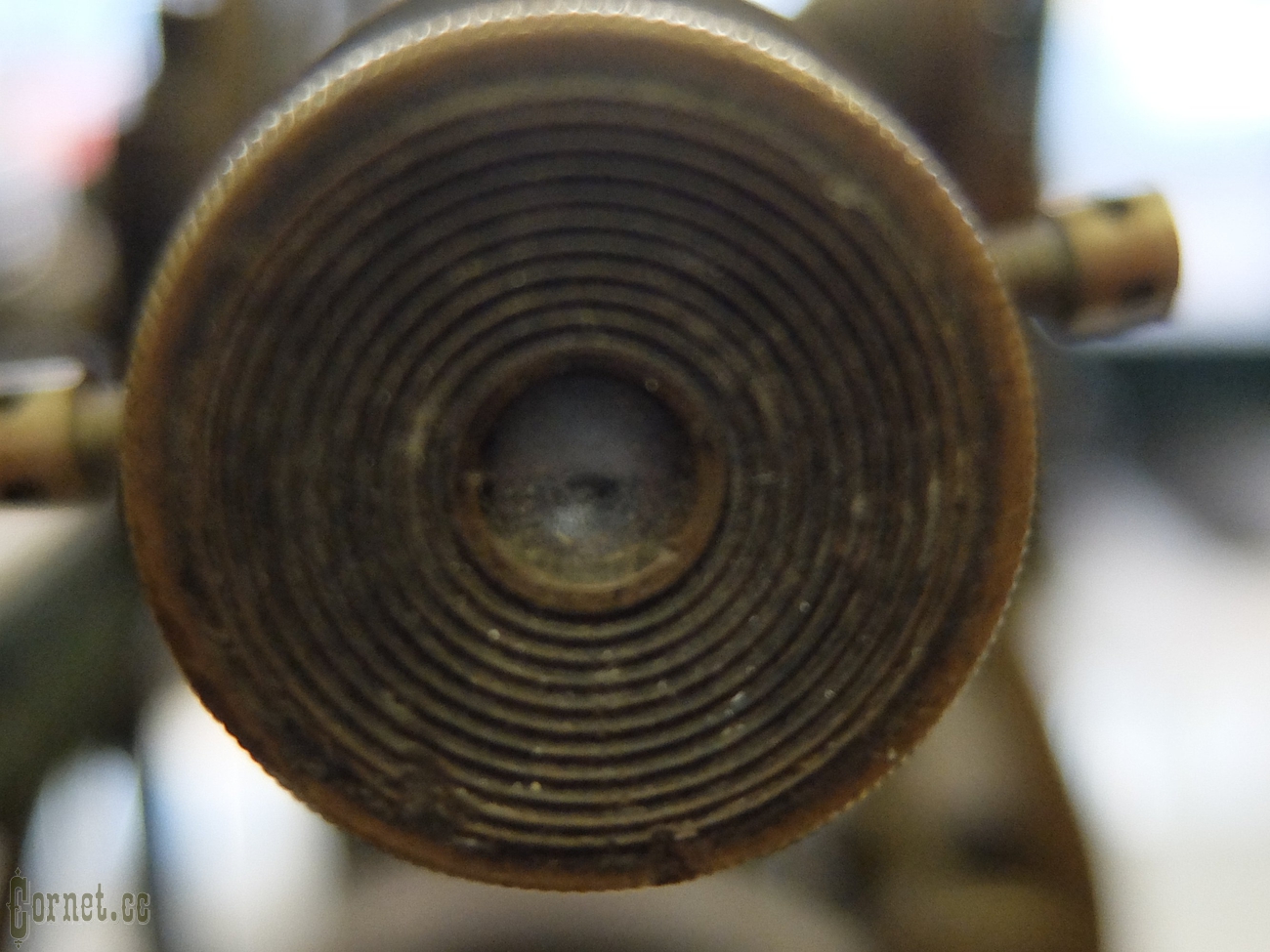№121319Theodolite of the firm "M.Tauber, K.Tsvetkov and Co"
The Russian Empire. Theodolite (astrolabe) with metal limbs and a bussole of the firm "M.Tauber, K.Tsvetkov and Co" of the Konstantinovsky Boundary Institute. Taking into account the beginning of the company's work since 1908, this device (head No. 314) can be dated to 1909.
Theodolite is a measuring device for determining horizontal and vertical angles during topographic surveys, geodetic and surveying works, in construction, etc. The main working measure in theodolite are limbs with degree and minute divisions (horizontal and vertical). Theodolite can be used to measure distances with a filament rangefinder and to determine magnetic azimuths using a bussoli.
This theodolite belongs to the repetitive ones, i.e. the horizontal limb can rotate relative to the base (unlike "simple" theodolites, in which the horizontal limb is tightly bonded to the base). Repeating theodolites have been known since the beginning of the nineteenth century and by the end of the century they had practically replaced the "simple" theodolites.
Light bronze. Needs cleaning. All microscopes are viewed, the glass is without cracks. Height about 30 cm, weight about 4-5 kg.
1390.- €
